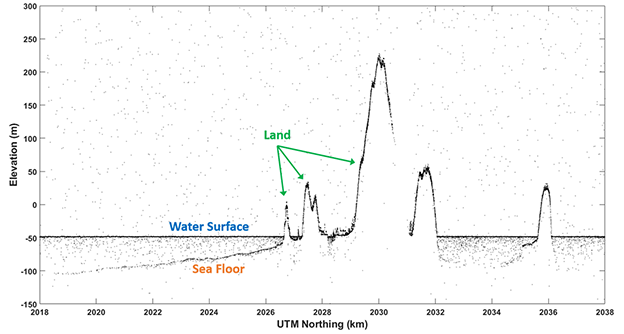IceSAT 2 was in the news recently - people have been using it to map the seabed/water depths. This is good news - the availability of recently captured calibration datasets (no matter how sparse) is a major impediment to roll-out of satellite derived bathymetry, as the seabed changes so much over time in places and the calibration data should ideally be captured close to the time the image was captured at. Laser wavelength is in the green portion of the spectrum - so good for penetrating water - wonder where they get the surface from? Weaker returns maybe? Tide gauge nearby?
I had a look to see what sort of coverage we had for coastal regions in Ireland and was directed to the excellent openaltimetry website. Looks like we have one scanline running through Tralee bay, another through Dublin bay - both sites we have published papers for but used older calibration data.
If you look closely in the image above - you can see there are points to the left and right of the green scanline - I dont know enough about the system yet to know is the profile spacing actually less (p.s. less is better) than that image suggests, or is that something to do with image footprint (unlikely as it is only 17m according to the website). You can use openaltimetry.org to have a quick look at profiles anywhere in Ireland - wonder would it have picked up the change over the National Ploughing Championships...
Update: Here's my answer - 6 beams organised in 3 pairs, with a weak/strong combination. Probably also answers the water surface question too..





No comments:
Post a Comment